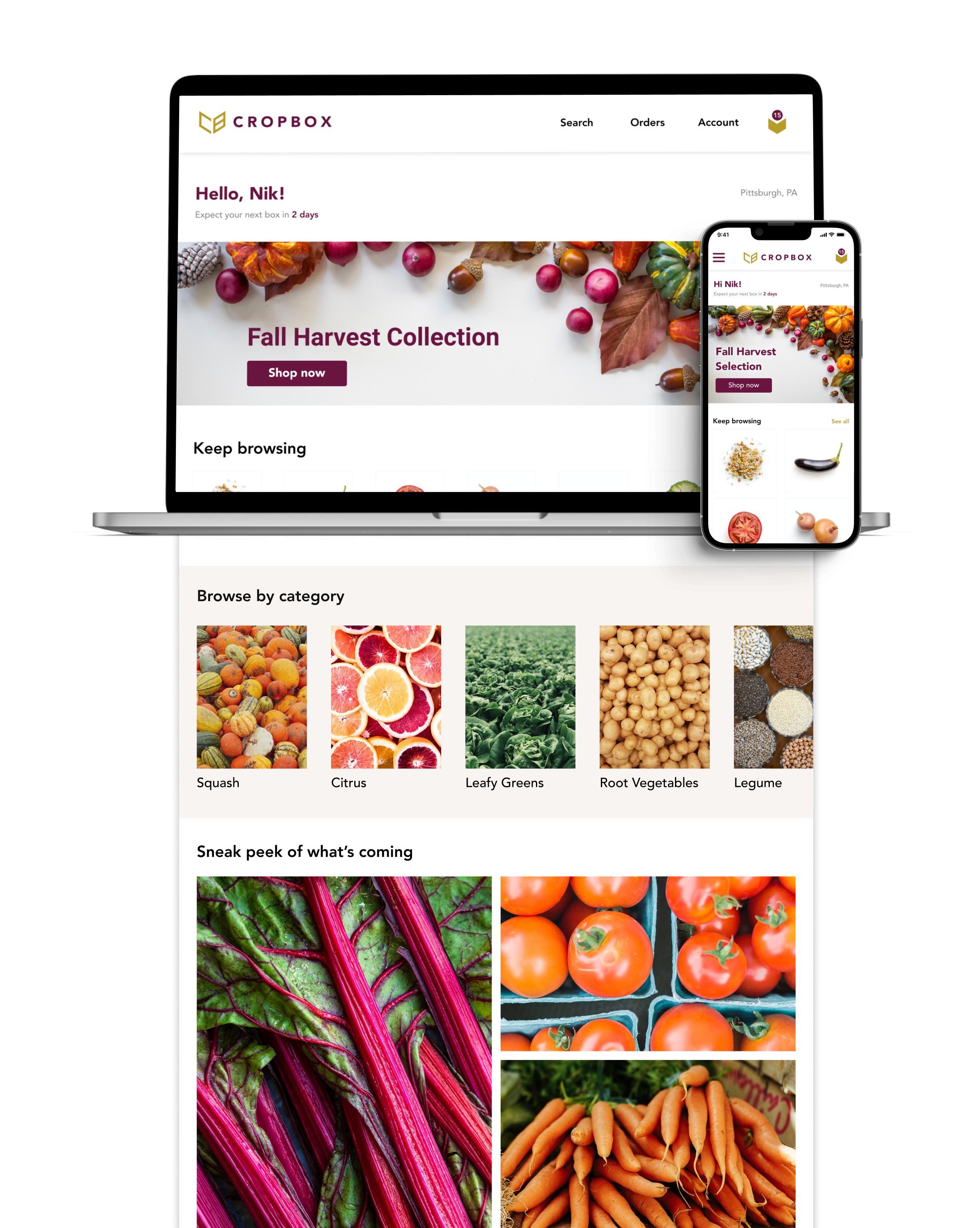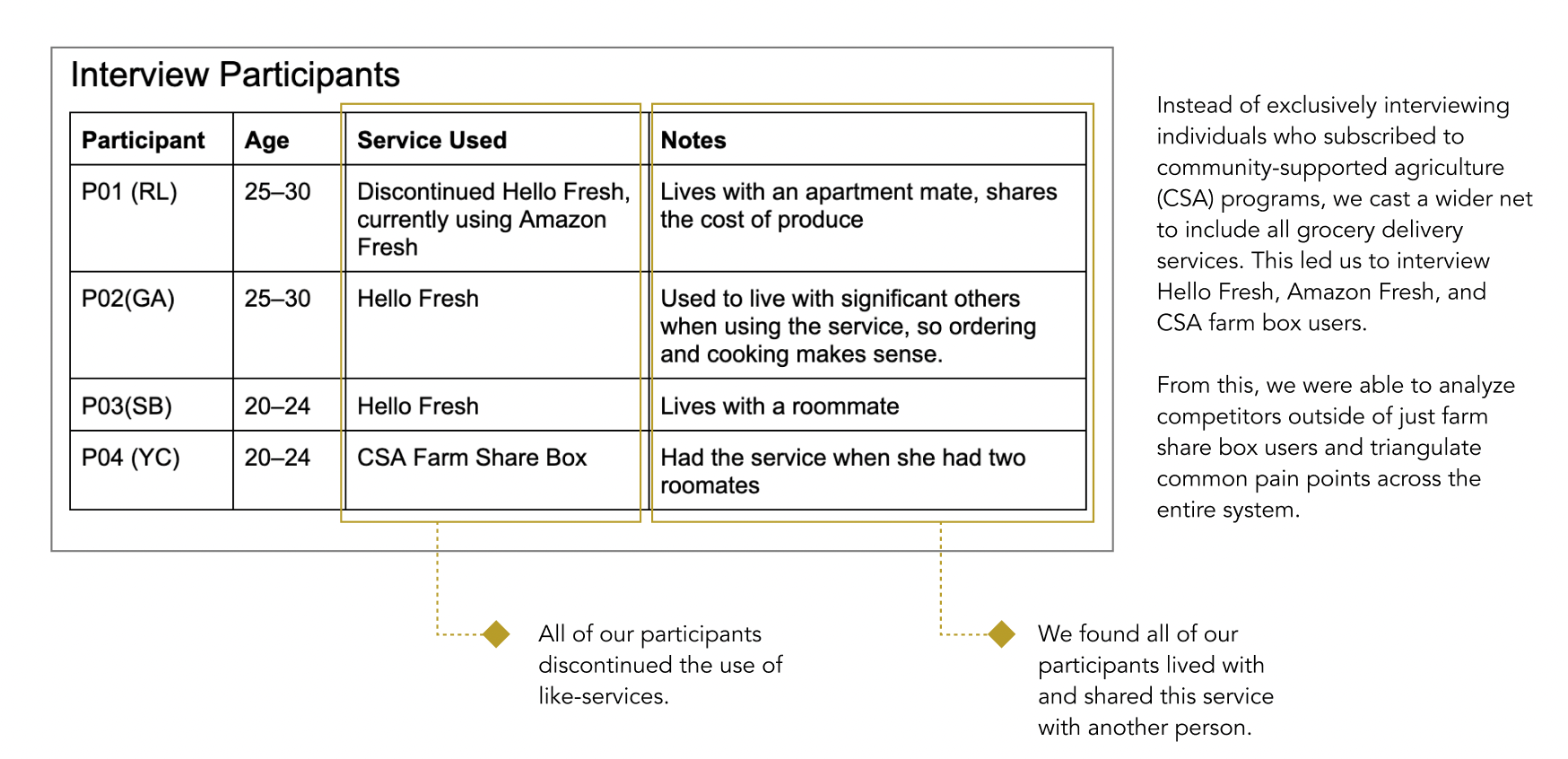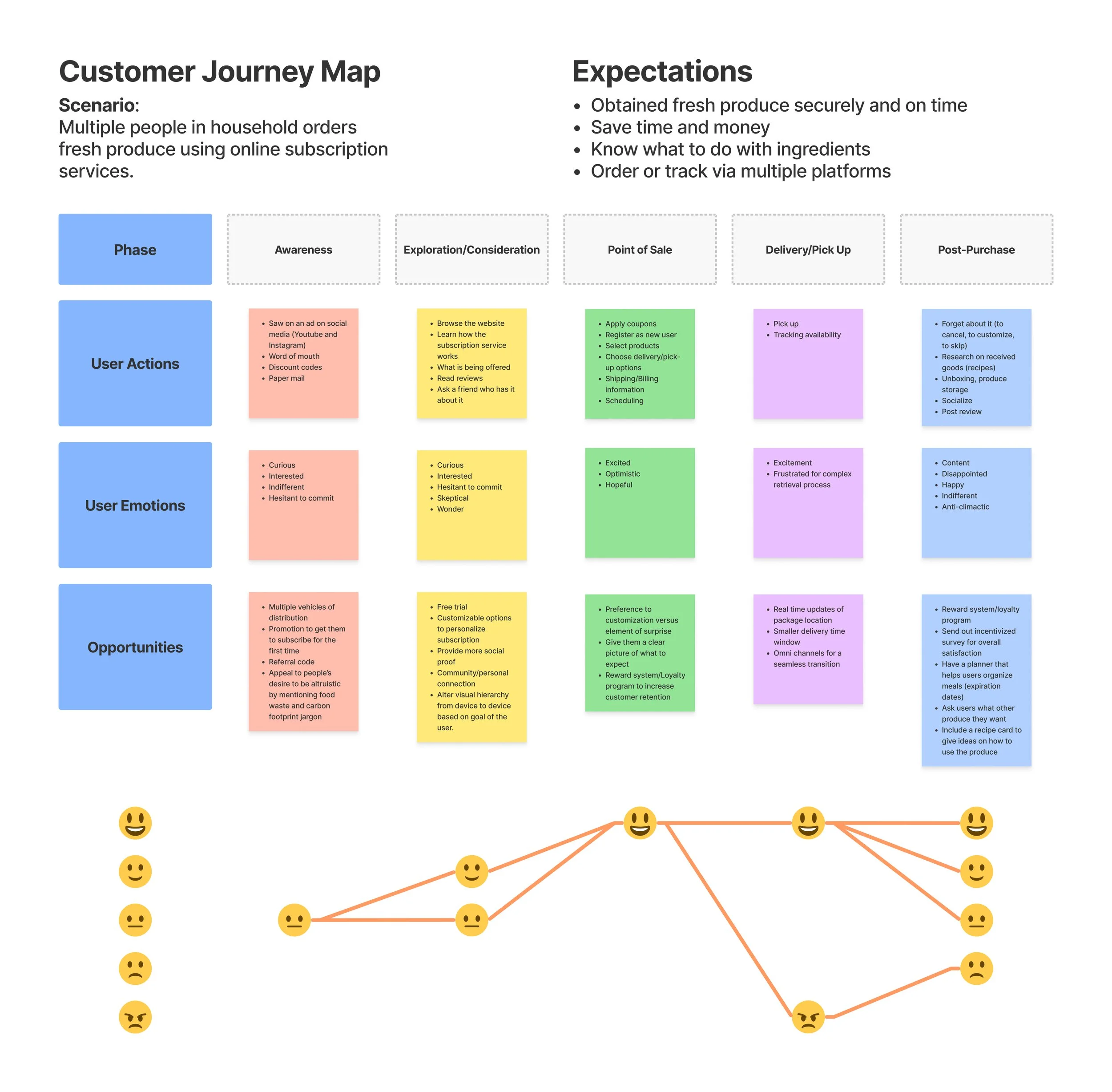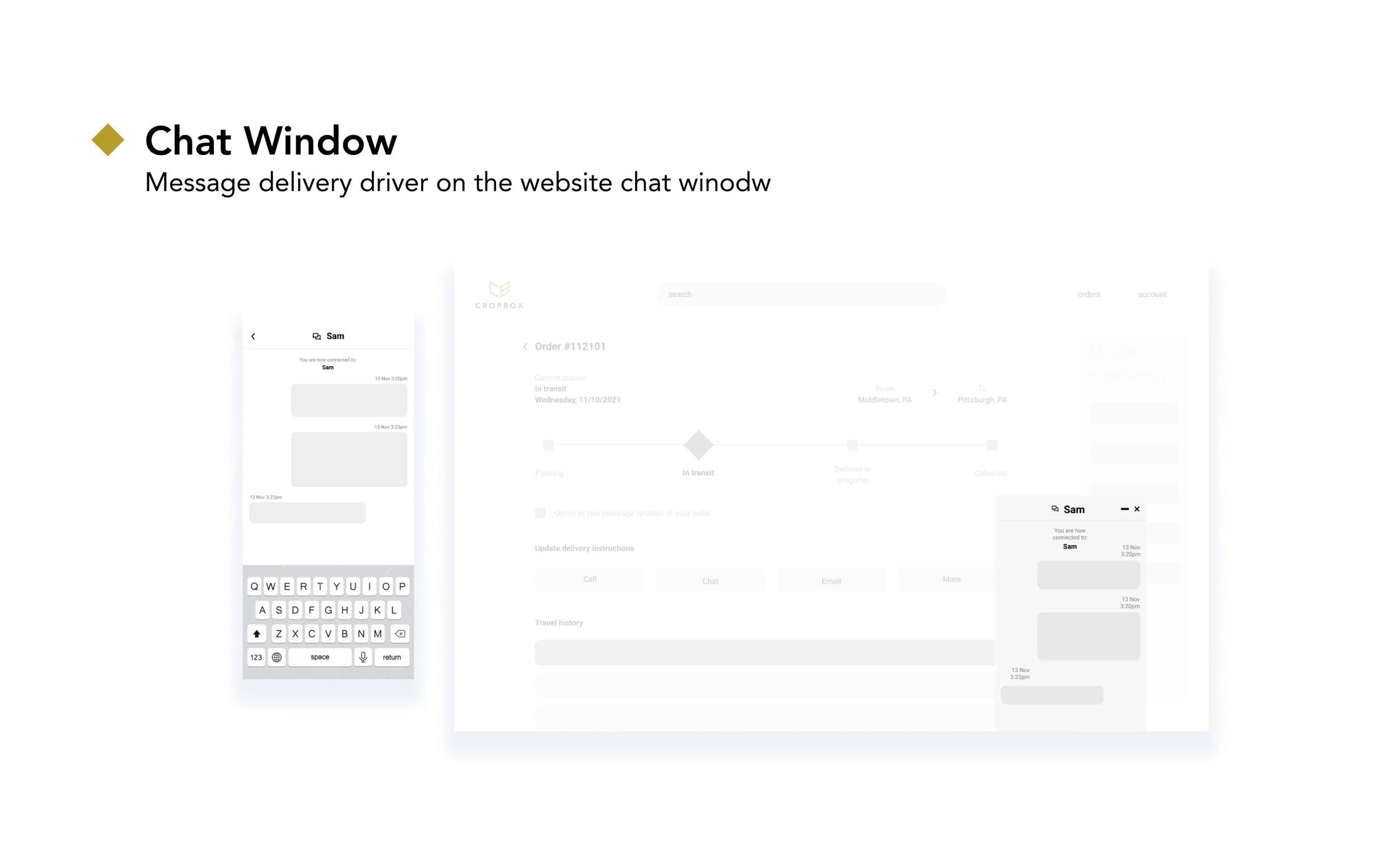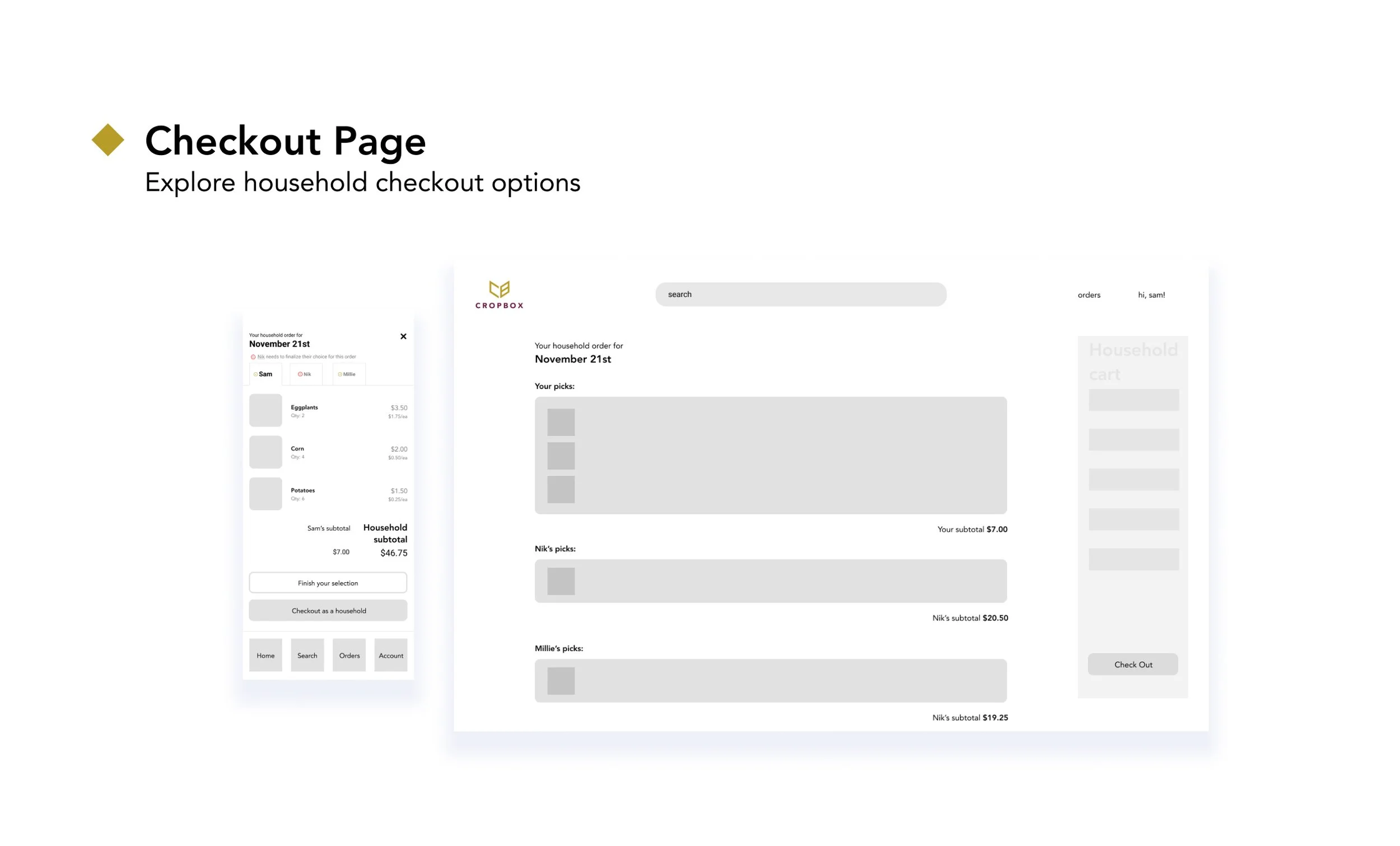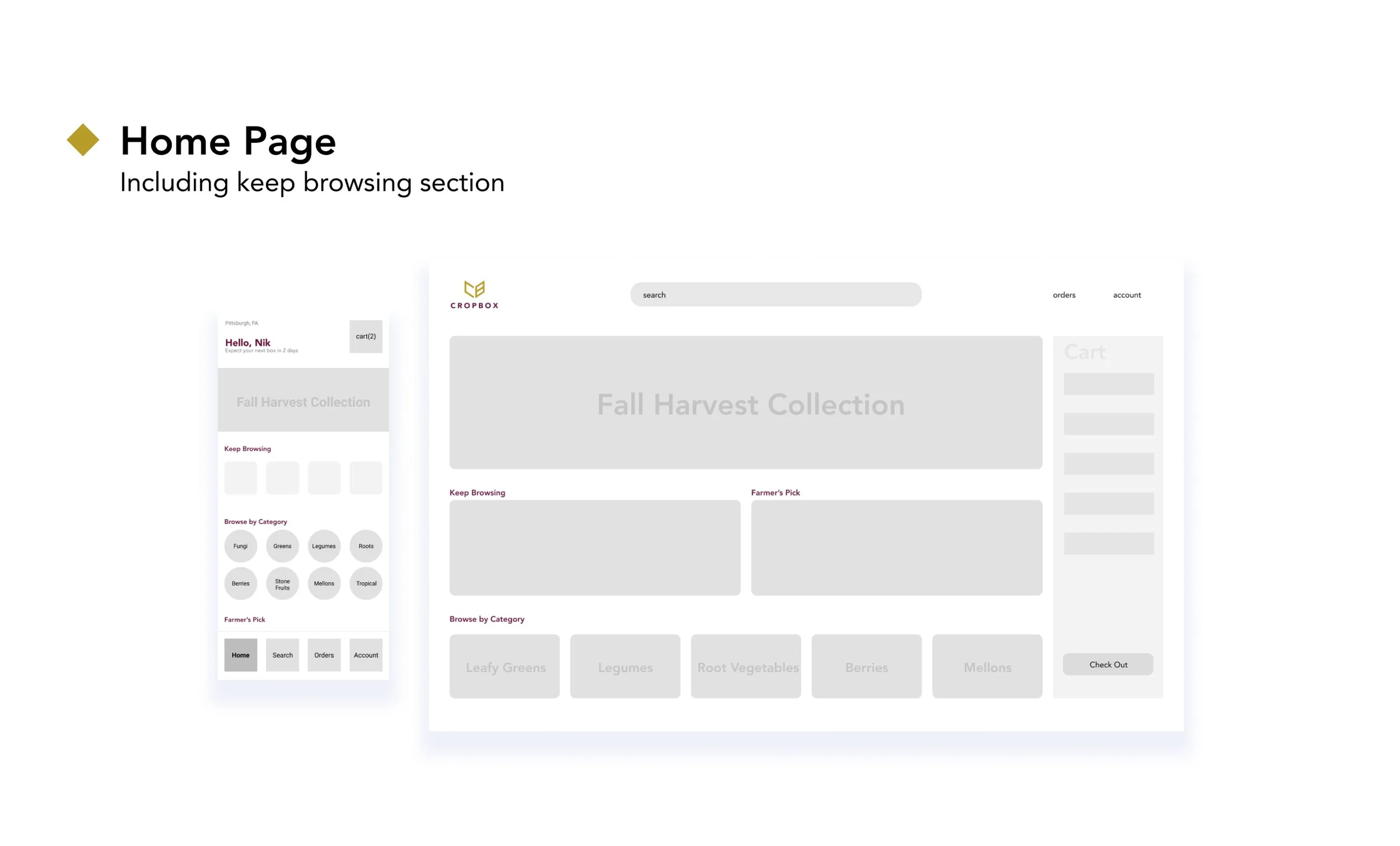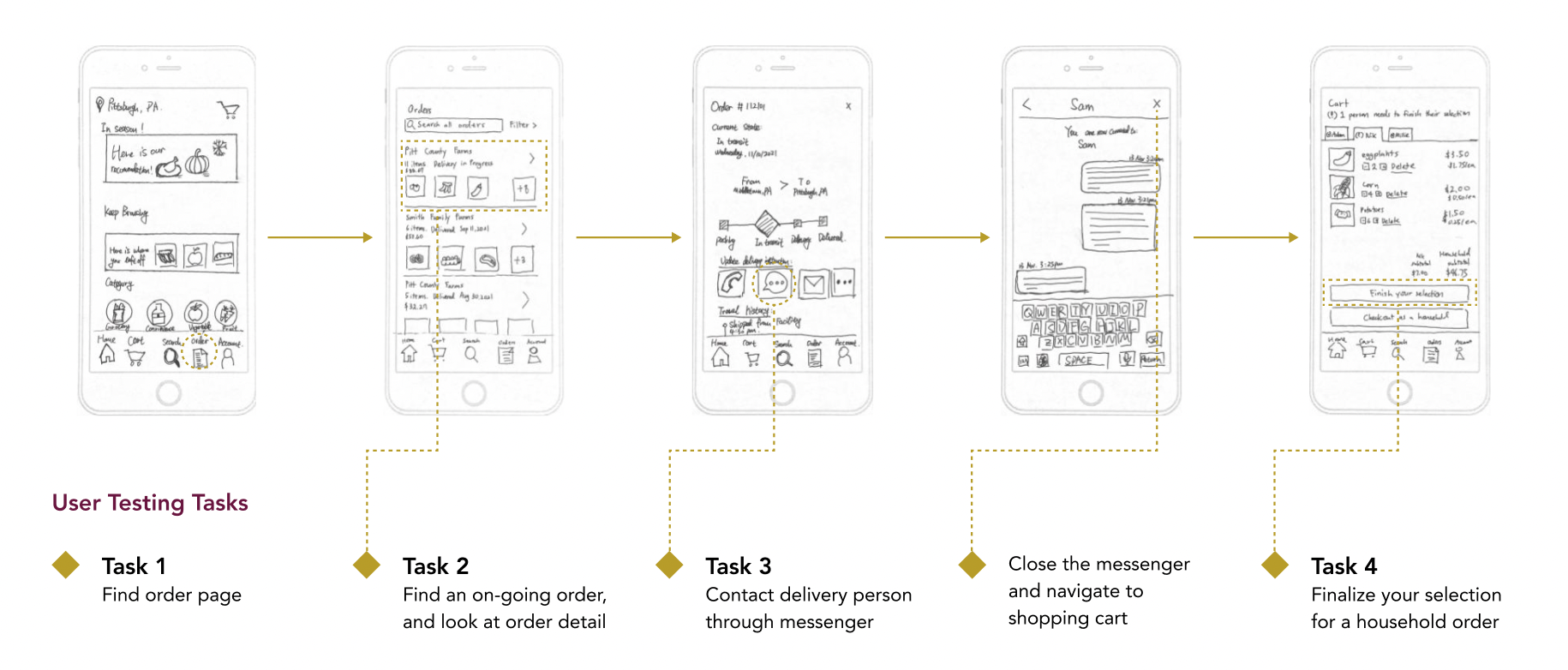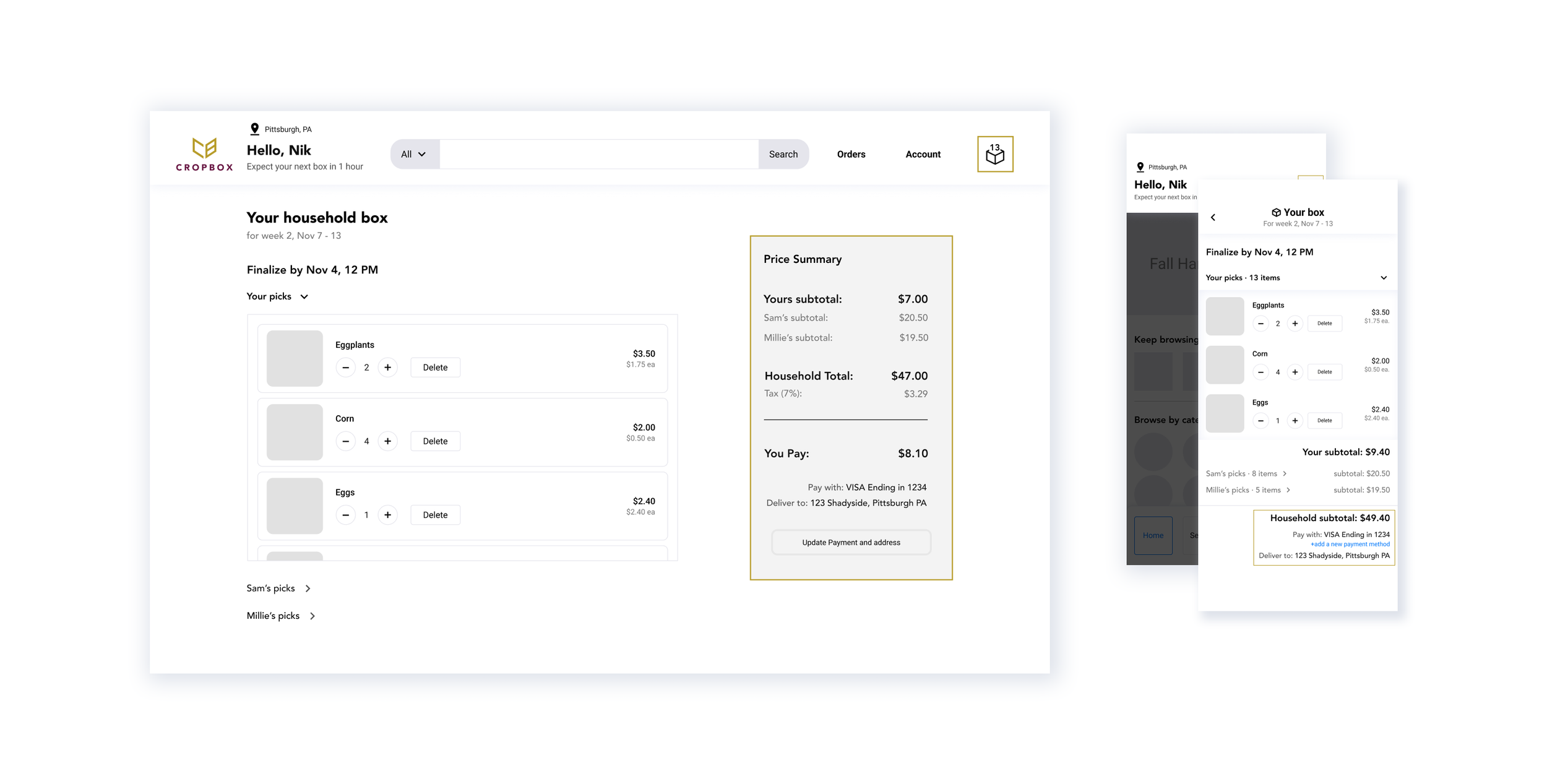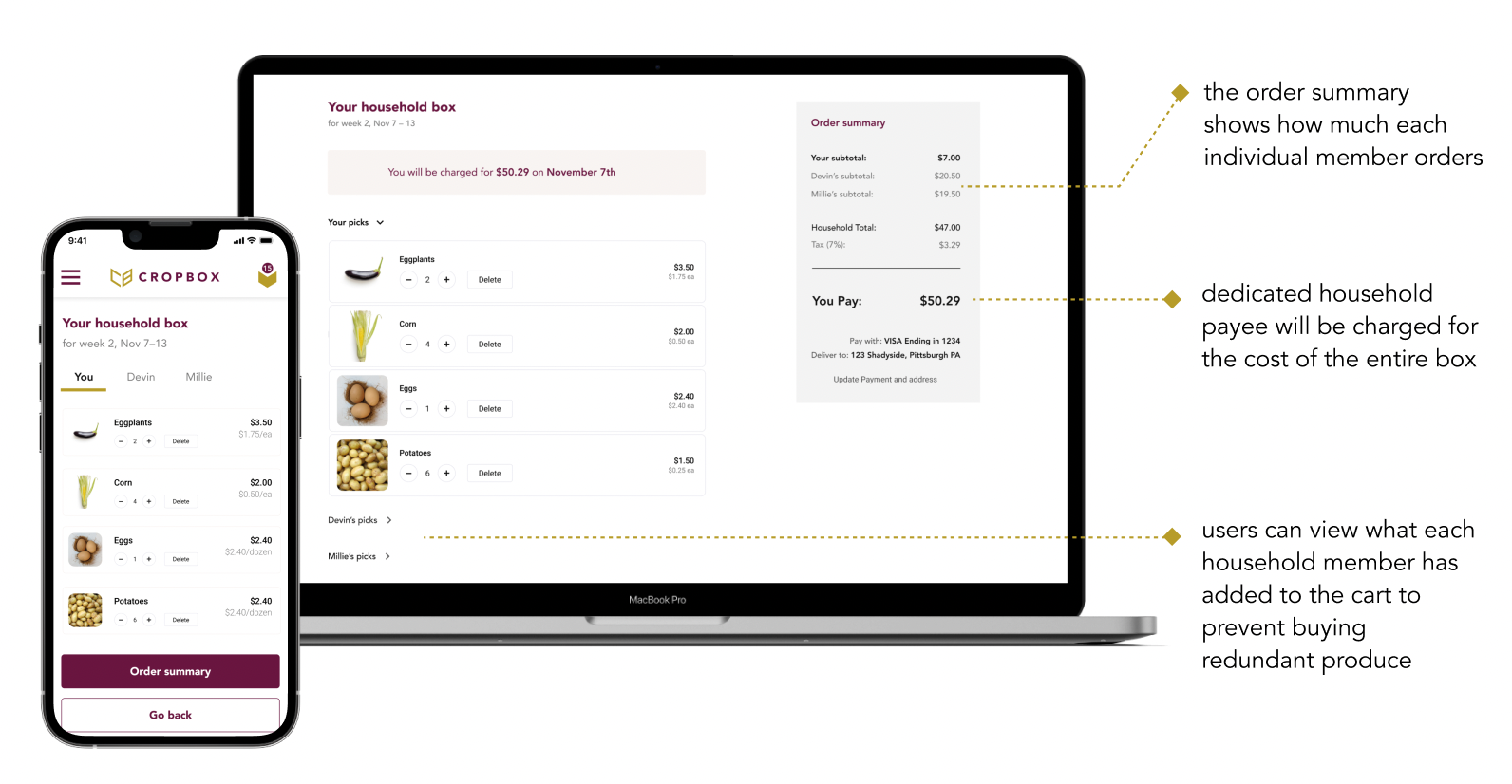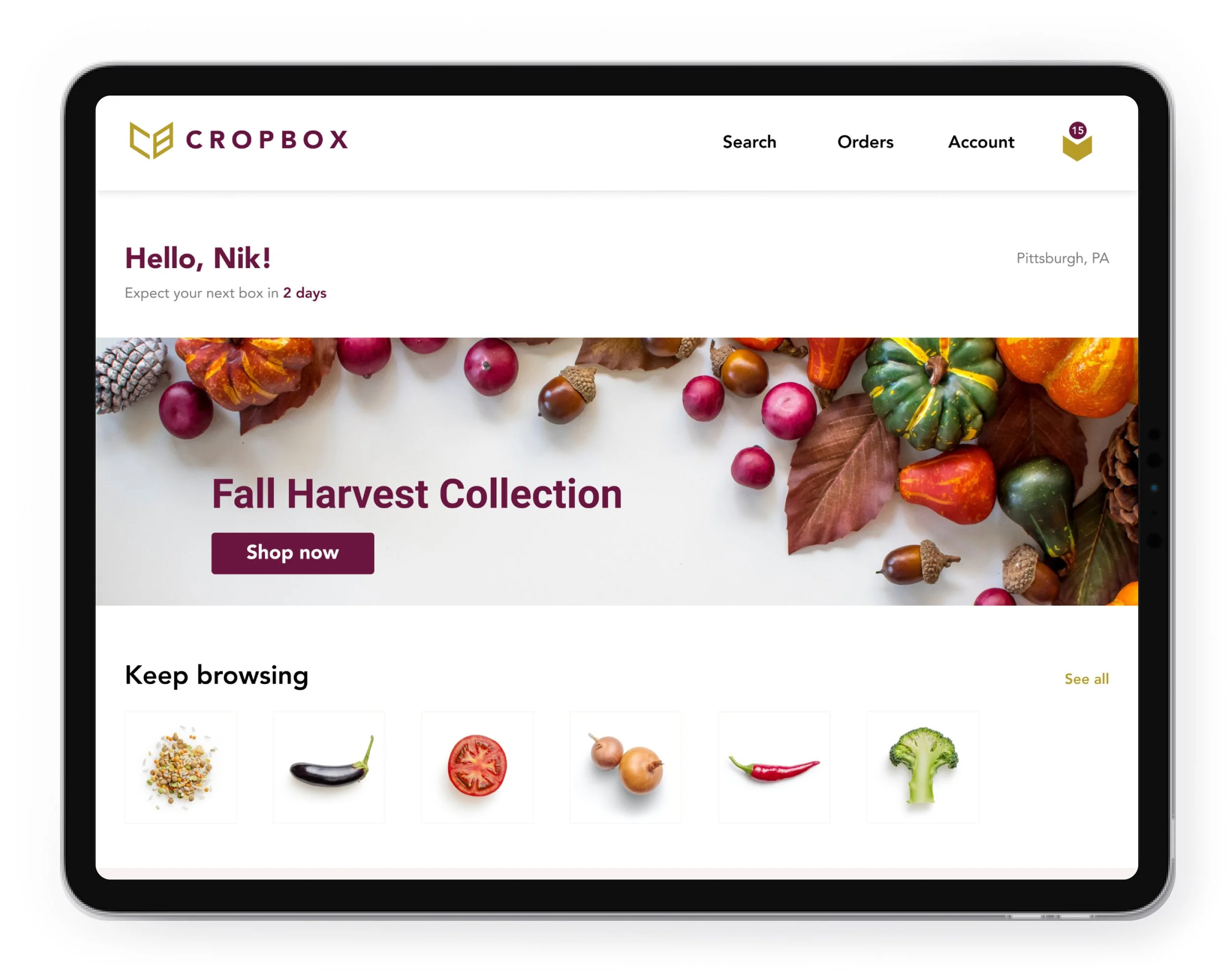CropBox
Optimizing the service design of a farm box subscription service for a multi-person household
Responsive Design | Service Design | UI Design | User Research
Community-supported agriculture (CSA) boxes are an alternative to centralized food growing systems in chain grocery stores. With local farmers, you also receive more varieties of seasonal fresh produce. Instead of buying produce that is transported from other parts of the country, buying produce from a local farmer can decrease the carbon footprint. Further, buying produce from farm share boxes can support local organic farmers, to create a healthy circular economy and relationship.
To get a better understanding of such services, the team looked at analogous services. These services are any types of grocery delivery service such as Hello Fresh, Amazon Fresh, and local CSA services to Pittsburgh, PA.
The team
Seonho Park, UX Researcher
Co-created protocols and tasking to be done during our initial think-aloud exercises.
Kristian Pham, Visual and Product Designer
Designed the visual identity of the project, conducted interviews, created research protocols, and made high-fi prototypes.
Senhao Wang, UX Lead
Designed the paper prototyping and brought it to the mid-fi level.
Tammy Zhou, Product Designer
Co-created protocols and assisted in refining the high-fidelity prototype.
My role and contributions
Through this project, I maintained the role of a product designer with an emphasis on visual design. For this project, I wrote the initial user interview protocol—which informed our customer journey map. Through parallel prototyping, all group members created initial wireframes. After writing the brand standards and guidelines, I took all low- and mid-fi prototypes and made our high-fi prototype.
User research
Our team conducted guerrilla-style user research, conducted interviews, and directed storytelling with participants who have experience using grocery delivery services.
After interviewing some customers of potential competitors of CropBox, we created a combined customer journey map to assess how to improve already existing models. We identified and broke down the general service model from like-competitors into 5 phases:
awareness
exploration/consideration
point-of-sale
delivery/pick-up, and;
post-purchase
We also focused on the phases where there were diverging branches in customer satisfaction. These points of divergence afford us an opportunity to design a standardized experience across the service.
Research insights
Inconsistent Quality of Deliveries - Research suggests users’ satisfaction with the services was heavily dependent on the delivery/pick-up process.
Hard to Place Orders as a Household - Users found it particularly challenging to find time to meet as a household to pick their groceries together.
Too Much Produce/Food to Consume - Users did not have a proper idea of how many units of items they will get or the quantity.
Hidden Fees Upset Customers - A lot of our participants expressed dissatisfaction with hidden fees like premiums, services, and delivery fees.
Design decisions
From the research findings, our team was able to discover which aspect of the service we could improve on and come up with a design solution that all of the stakeholders could potentially benefit from. The three key design decisions informed by the research insights are the Delivery Tracking and Communication system, “Keep browsing” section, and “Checkout as a household” feature.
Low-fi prototype
When creating the low-fi prototype, our goal was to understand the flow since we were making assumptions about how a user would navigate through tasks.
Paper prototype
After finishing the low-fi design, we created paper prototypes to test out the following key user tasks and gain feedback.
Mid-fi prototype
One of the feedback we received from user testing was the location of the cart icon on the mobile is different from their expectation. The user was looking for a cart icon on the top right corner of the screen in their mental model. We did more research on similar design patterns and decided to
incorporate their feedback in this iteration.
We also received critiques when users were confused between the two buttons “checkout as a household” and “finish your selection”. One user thought clicking on the “finish your selection” button would direct them to another page while another was concerned about what would happen if two people in the same household would click on the “checkout as a household” button at the same time.
As a team, we reflected on what subscription service design means and how it could be improved to help both end-users and service providers. We decided to remove those two buttons and instead dedicate one person as the household payee who will be charged for the cost of the entire box.
High-fi prototype
Measuring success
In order to fully evaluate the effectiveness of our design, we divided up the success criteria into three different categories that measure system performance, user overall satisfaction, and user willingness to pay.
Net Promoter Score - a strong indicator for our overall design solutions
Active Monthly Subscribers to CropBox - a universal indicator of how big our audience is. It can also reflect our product’s penetration rate in the intended audience group.
Price Milestone for Household - for other farm share boxes, they come in preset sizes for users to select. Our design is different and we offer more flexibility, so measuring average household price is critical to measuring our success
Next steps
Going forward, we wish to continue to explore and refine our solution for CropBox.
Add tablet mobile UI
Explore pay as household/individual options
More user testings and iterations


